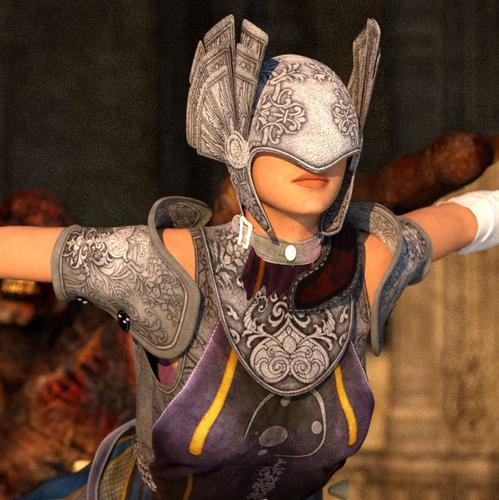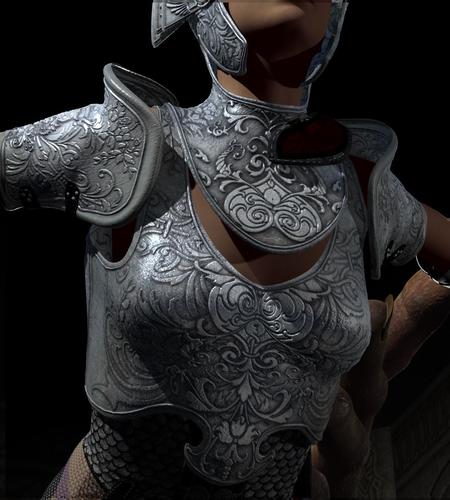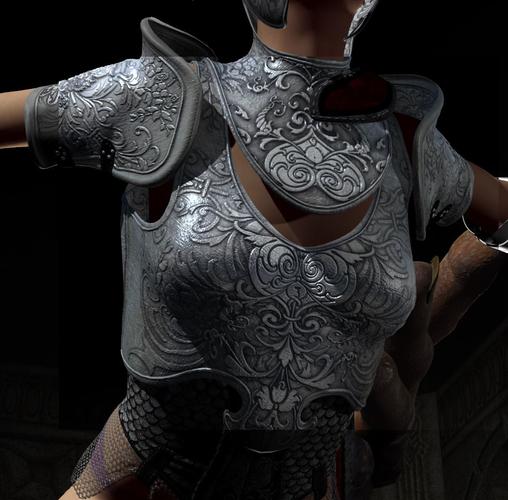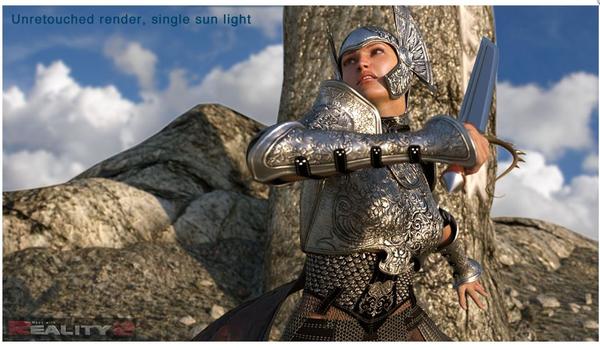Getting Normal Map High Res Results in Daz
 SoulUnit
Posts: 112
SoulUnit
Posts: 112
Hi there,
I have been looking through the forums on using normal maps in Daz and it is a bit generic so I am trying to narrow down the result to get a specific answer. I recently purchased Reality 2 based on this screen shot wherein the author is talking about using a normal map to get greater detail. I have to say I was very impressed with the result! But I have no idea how to use it and the learning curve is a little steep right now so no time to get into how he achieved this. Here is the video for the features wherein he explains the normals maps. http://www.youtube.com/watch?v=emjlig6vYtA
My question is not so much about using Reality 2 to get this result as I know it is an unbiased render but are similar results available using the 3ddleight engine?
Super noob question: How do use it in Daz3d 4.6? I am using the "Alruna" file .jpg to create a normal map using the photshop plugin when I add the file to the normal channel in Daz would I need to take out the bump map or displacement map and just use the normal map instead, or do you add the normal map on top of the other channels for bump and displacement?
I also have the standalone version of Octane Render and would like to see how the normal map may make a difference if I add it in. I am including a shot of Octane render exported as an obj from Daz and you can see it is not doing well with the bump.
I am also including a shot from Daz with no normal and then with the normal on the breast plate only. I dont see a difference.
Any help would be appreciated.










Comments
In my "tutorials" Displaced Bumps and Is This Normal? I talk about the differences between displacement, bump and normal maps for adding details to surfaces.
While I've seen the comment "Normal maps are best" this isn't necessarily the case. First, the quality of the maps has a significant factor in the results you'll get. Second is how the rendering engine handles each of the technologies.
Normal maps are faster than either bump or displacement because the rendering engine has to do fewer calculations during the render. This is why they are used in realtime rendering engines. However, in an of itself, normal mapping is not superior technology when it comes to adding surface detail.
In general, if all of the maps (normal, displacement, bump) are adding the same details, then it doesn't add anything to put an additional layer into the calculations. Also, keep in mind that the best normal maps are created using two versions of the object file. One is a "high resolution" version that has all of the details built into the mesh itself. The second is a version with fewer polygons which will be the version that is used in the renders. The normal map is generated by saying "If the low-res version had the details that the high-res version does, how would the surface normals be affected?"
This means that if you're converting a bump or displacement map using something like the PhotoShop plug-in or the Xnormal tool that I mention in my DAZ Studio Displacement in Carrara 8 discussion, the normal map that is generated is going to have exactly the same values as the bump/displacement map you started with. Which means your results are then going to be governed by how the rendering engine implements each technology.
In the DS/Carrara discussion, Carrara handles normal maps better than it does displacement; so my results were better with the normal map than displacement. But that's specific to that rendering engine.
To expand on a couple of Johnny's points...
1. IF the normal map is 'baked' from a 'high resolution' mesh, then it doesn't matter if the mesh it's being applied to is lower...in some case quite significantly lower. But, to have the best detail from a displacement map, you need plenty of geometry/subdivisions to push around to get those details.
2. It's been a while since I've read those tutorials, so I can't remember if Johnny discussed the fact that DS uses mid-grey ( 127 127 127) as the 'base' level....darker (shading towards black) means displacement below the 'surface level' and lighter (towards white) means above the surface level when dealing with both bump and displacement maps. The absolutes (black/white) are the maximum/minimum, in centimeters (in DS) as set by the limit sliders, multiplied with the strength level. Normal maps have the 'amount' of movement contained within the colors of the map, itself.
3. If you create a normal map, from an unaltered displacement/bump map, using the plugin, you will have the same values, as Johnny mentioned, which, translates into pretty much having the exact same effect as using the original map, at its default min/max and strength settings, when used by itself or when used with either, no noticeable additions to what they do. By replacing the bump/displacement with a converted normal map, usually, you can get the same look with a speed up in render time.
4. Another thing to think about...Luxrender's 'base unit' is one meter. DS is one centimeter....so to get the proper results, displacement/bump amounts need to have a 'multiplier' applied to them...to reduce their values down to 'actual' measurements. That means a value of 0.01 in DS is a millimeter, while the same strength value in Luxrender is actually a centimeter, without the conversion factor. Normal maps don't have this problem. as they are pretty much 'unitless'.
Mid-grey is neutral if Min and Max are equal and opposite - if not some other grey value will be neutral.
In general, if all of the maps (normal, displacement, bump) are adding the same details, then it doesn't add anything to put an additional layer into the calculations. Also, keep in mind that the best normal maps are created using two versions of the object file. One is a "high resolution" version that has all of the details built into the mesh itself. The second is a version with fewer polygons which will be the version that is used in the renders. The normal map is generated by saying "If the low-res version had the details that the high-res version does, how would the surface normals be affected?"
This means that if you're converting a bump or displacement map using something like the PhotoShop plug-in or the Xnormal tool that I mention in my DAZ Studio Displacement in Carrara 8 discussion, the normal map that is generated is going to have exactly the same values as the bump/displacement map you started with. Which means your results are then going to be governed by how the rendering engine implements each technology.
In the DS/Carrara discussion, Carrara handles normal maps better than it does displacement; so my results were better with the normal map than displacement. But that's specific to that rendering engine.
Hey great forum here and really quick and useful responses! Thank you both Picked a crazybump in the meantime and am experimenting with settings now. Looks like I missed the idea that normal maps needed to be .png and not jpg files... This is a shot with a crazybump map normal added into the scene it does seem to make a difference.